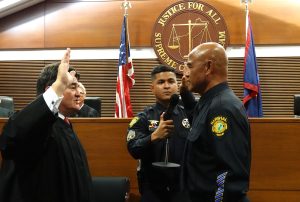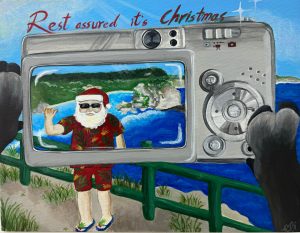CPA BRACES FOR Y2K PROBLEM No ships will be allowed to enter or leave Saipan on midnight of Dec. 31
When the clock strikes on midnight of December 31, 1999, no ships will be allowed to enter or leave Saipan Harbor to prevent the occurrence of sea accident related to the computer glitch.
By 7 :00 AM, the ships arriving at the harbor will be escorted by tugboats just to make sure that the vessels would not run aground at the reef in case the communication system on board malfunctions in the year 2000.
This is the contingency measure being prepared by Seaport Division Manager Antonio Cabrera after the U.S. Coast Guard started meeting with seaport tenants to determine efforts being made by the companies in preparation for the much-awaited millennium bug.
“We don’t want any of the ship to end on the reef,” said Cabrera.
During a recent meeting, the U.S. Coast Guard has asked owners of ships and marine facility managers to answer a survey which it is conducting to find out if they are prepared to handle the year 2000 computer glitch.
The survey is part of the efforts being made by the International Maritime Organization. Shipping companies that fail to submit their answers to the questionnaire would be subject to certain restrictions.
According to Capt. J. Glover of the U.S. Coast Guard, captains of the ports will use this assessment to determine what, if any, operational controls should be imposed on vessels and facilities during high risks periods. U.S. flagged vessels, including small passenger vessels, and facilities must submit the IMO survey by Aug. 1, 1999.
“By submitting the surveys within the required time frame, your company will not only be in compliance with regulations, it will be providing the Coast Guard with the information necessary to make reasonable decisions about the operation of your vessels or facilities during high risk periods,” said Glover.
Computer programs for engine automation systems that send critical operating signals are good examples of possible Y2K problem. If these programs misread “00” as the year 1900 instead of 2000, they may misinterpret that 100 years have passed and respond with an inappropriate action, creating a domino effect that could shutdown systems.
The risk period for Y2K-related equipment and system failures and malfunctions is not limited to Jan. 1, 2000. Similar problems are associated with the dates Sept. 9, 1999 and Feb. 29, 2000.
Officials are concerned with the date Sept. 9, 1999 because of the common programming practice of using 9999 or simply 99 to mark the end of a file or a record that should be archived or purged. For instance, a maritime application might prompt someone to enter 99 as a year if they want to delete the corresponding file.
In the same manner, Feb. 29, 2000 may become a problem because of how leap years are determined. Calendars reflect the leap years occurring every four years. However, leap years do not adhere to a strict four-year cycle. As a result, century years are not leap years with the exception of century years evenly divisible by 400 such as Feb. 29, 2000.
Problems could occur in programs not properly programmed to accept this date. If a microprocessor reads 00 as the year 1900, it will fail to enter the 29th of February because 1900 unlike 2000, was not a leap year.
Marine facilities are also at risk from Y2K-related problems. Systems that use time as a function of measurement such as fire detection systems cargo tracking software, process flow controls (oil, gas and chemical), temperature controls and alarms are most vulnerable.
System sensors could cause an automatic shutdown response that could in turn trigger some other fail-safe response. Likewise, a release of hazardous materials could occur when over pressure safeguards react to the sudden closure of a valve against the flow of gas or liquid.






